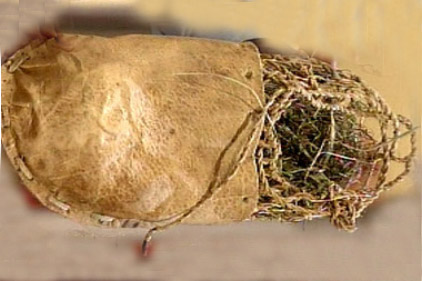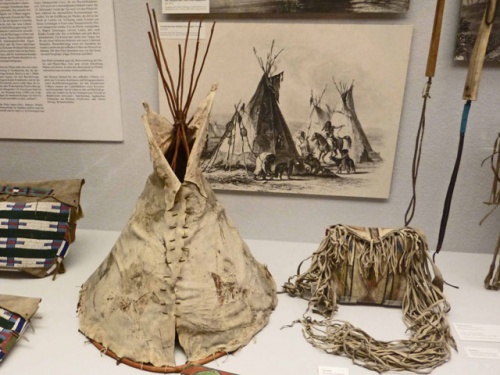Difference between revisions of "Tanning with fats and oils"
From www.leather-dictionary.com - The Leather Dictionary
| (One intermediate revision by one user not shown) | |||
| Line 10: | Line 10: | ||
<p align=center> | <p align=center> | ||
| − | [[bild:Schuh-Oetzi.jpg| | + | [[bild:Schuh-Oetzi.jpg|500px]] |
| − | [[bild:Zeltwand-Leder-01.jpg| | + | </p> |
| + | <p align=center> | ||
| + | [[bild:Zeltwand-Leder-01.jpg|500px]] | ||
</p> | </p> | ||
<p align=center> | <p align=center> | ||
| Line 18: | Line 20: | ||
== Additional information == | == Additional information == | ||
| + | * [[Leather production]] | ||
* [[Tanning]] | * [[Tanning]] | ||
* [[Tannins]] | * [[Tannins]] | ||
Latest revision as of 21:09, 12 December 2022
Tanning skins and hides with fats and oils is a very old method. It involves using fat-rich animal substances such as brain, fish oil, sebum or marrow. It can also be done with soap, claw oil, yak butter or egg yolk. In olden times, animals were mainly hunted for food, clothing and shelter and using animal fats to preserve their skins was common practice.
It is believed that 5,000 years ago, leather for shoes, tent walls, straps and leather clothing had been preserved by fat tanning and subsequent smoking.
Leather thousands of years ago: Shoes and tent walls.
Additional information
- Leather production
- Tanning
- Tannins
- Chrome tanning
- Vegetable tanning
- Synthetic tanning
- Brain tanning
- Chamois leather
- Tawing with alum
Videos about the leather production
The leather production in a modern tannery.
| Tanning methods |
|---|
| Chrome tanning - Vegetable-tanned leather - Synthetic tanning - Tanning with fats and oils |










 a kotori web solution
a kotori web solution